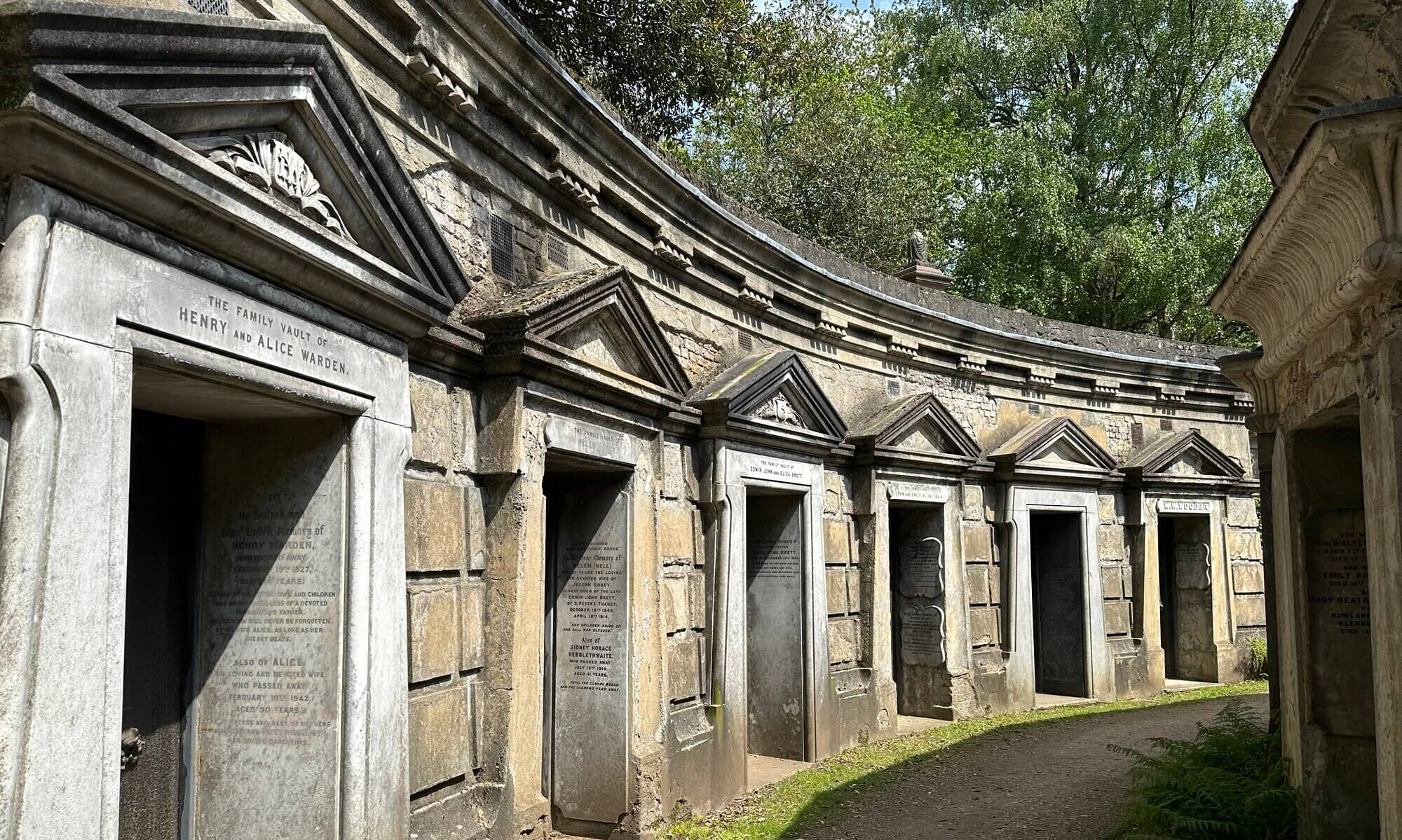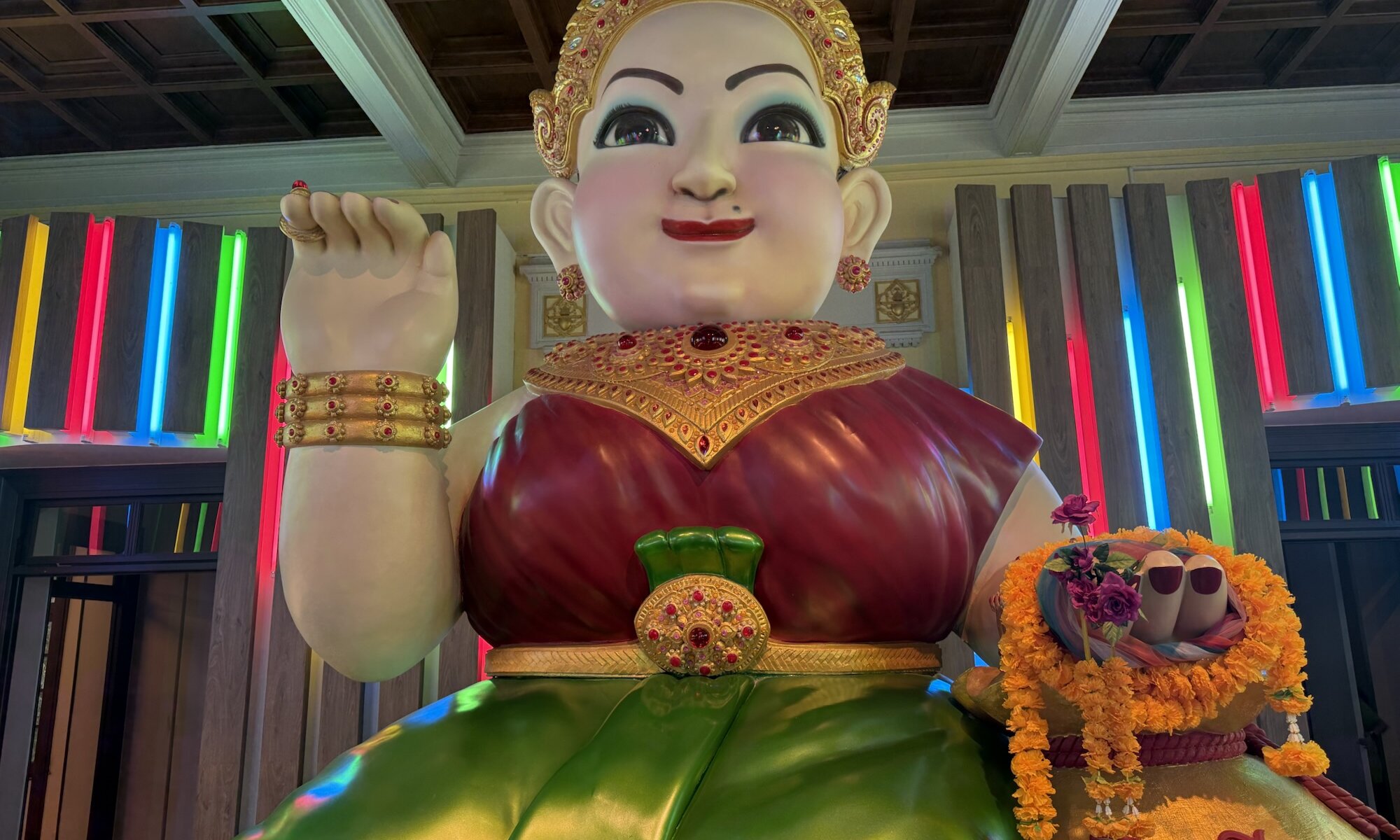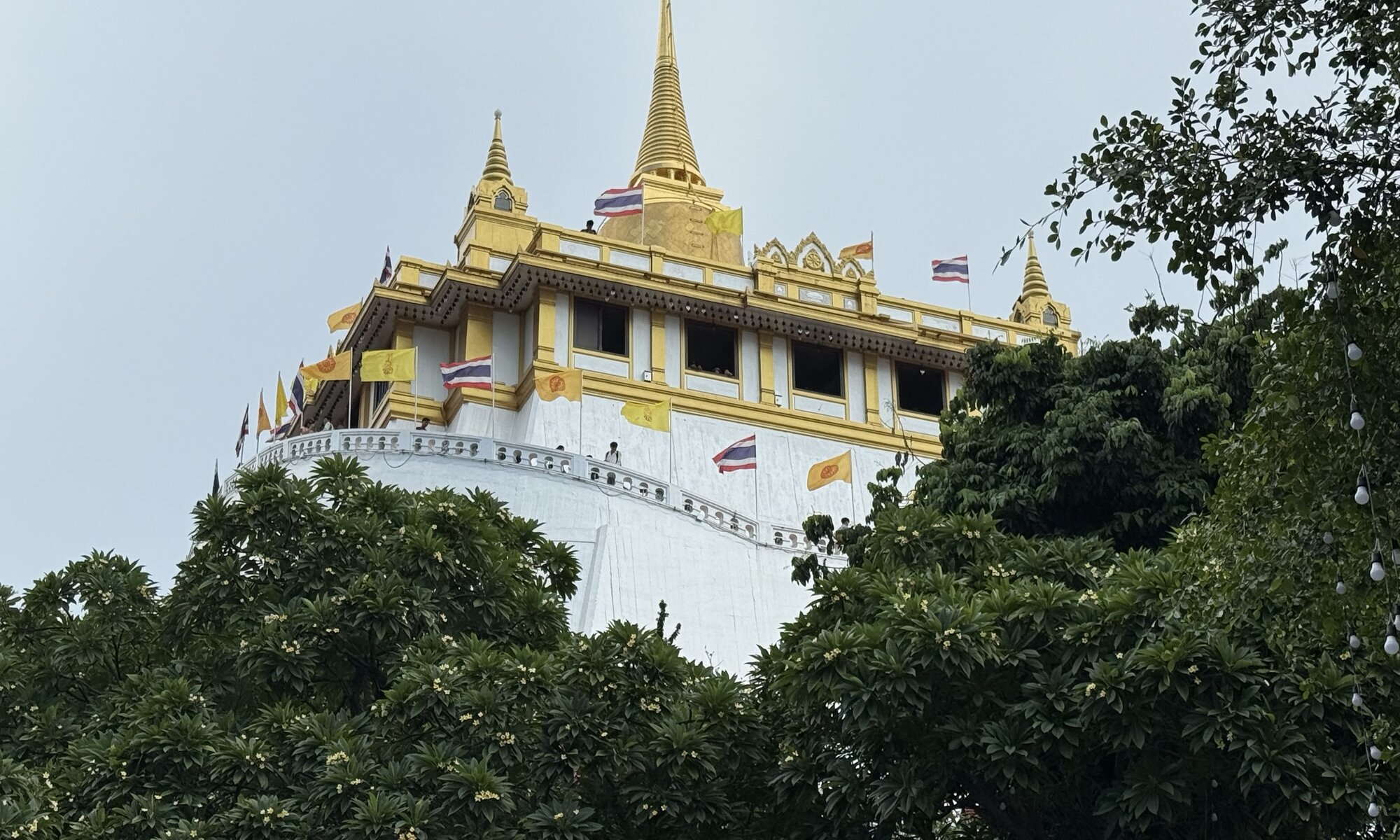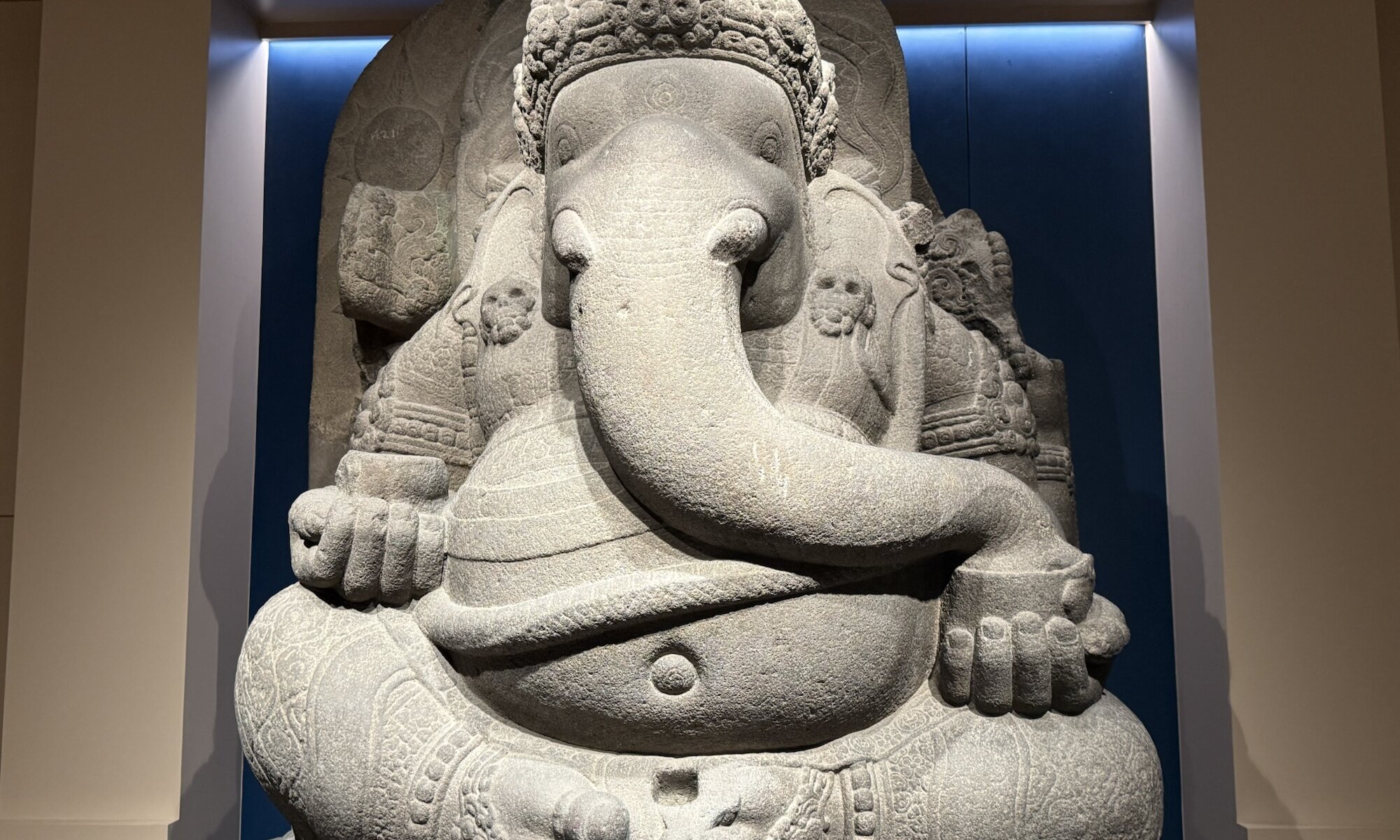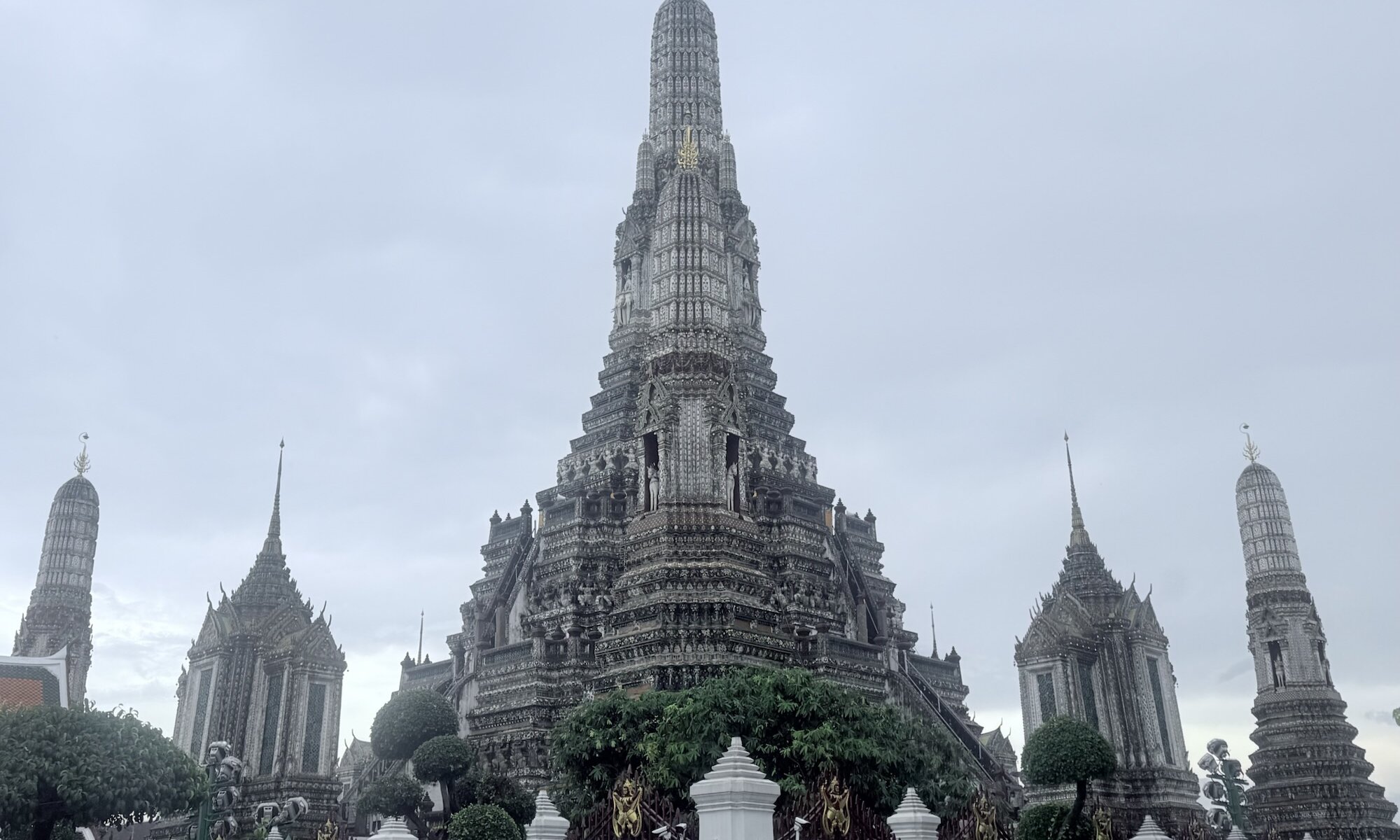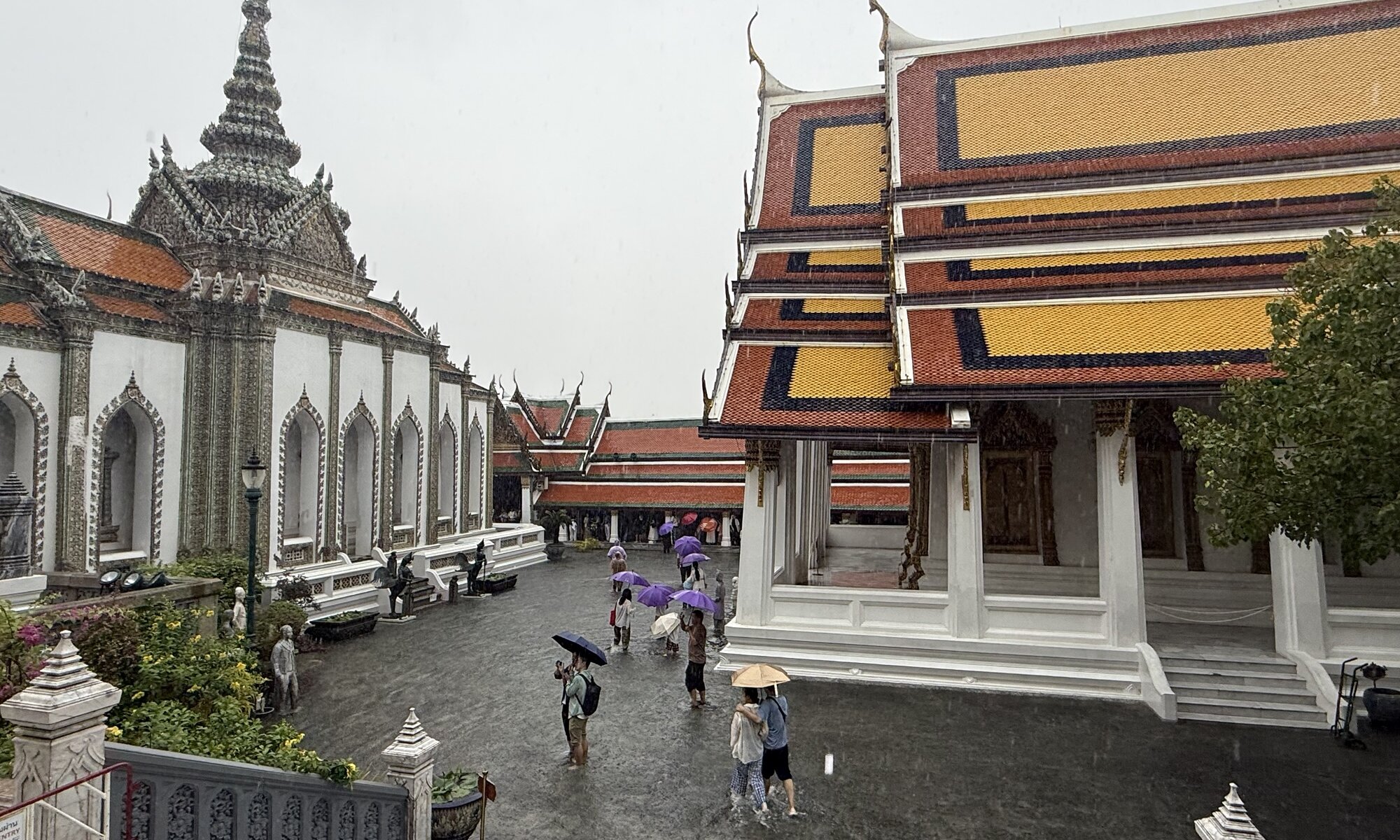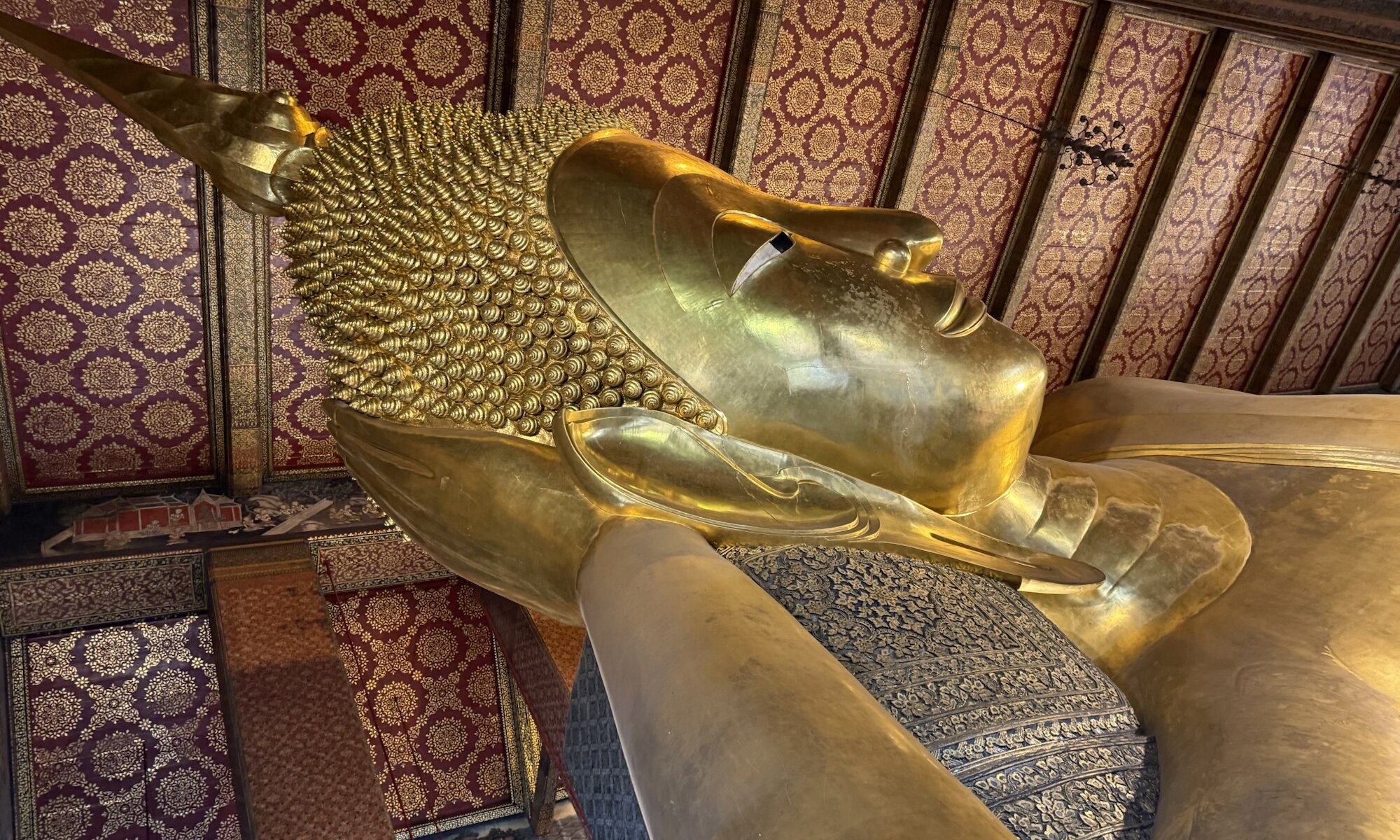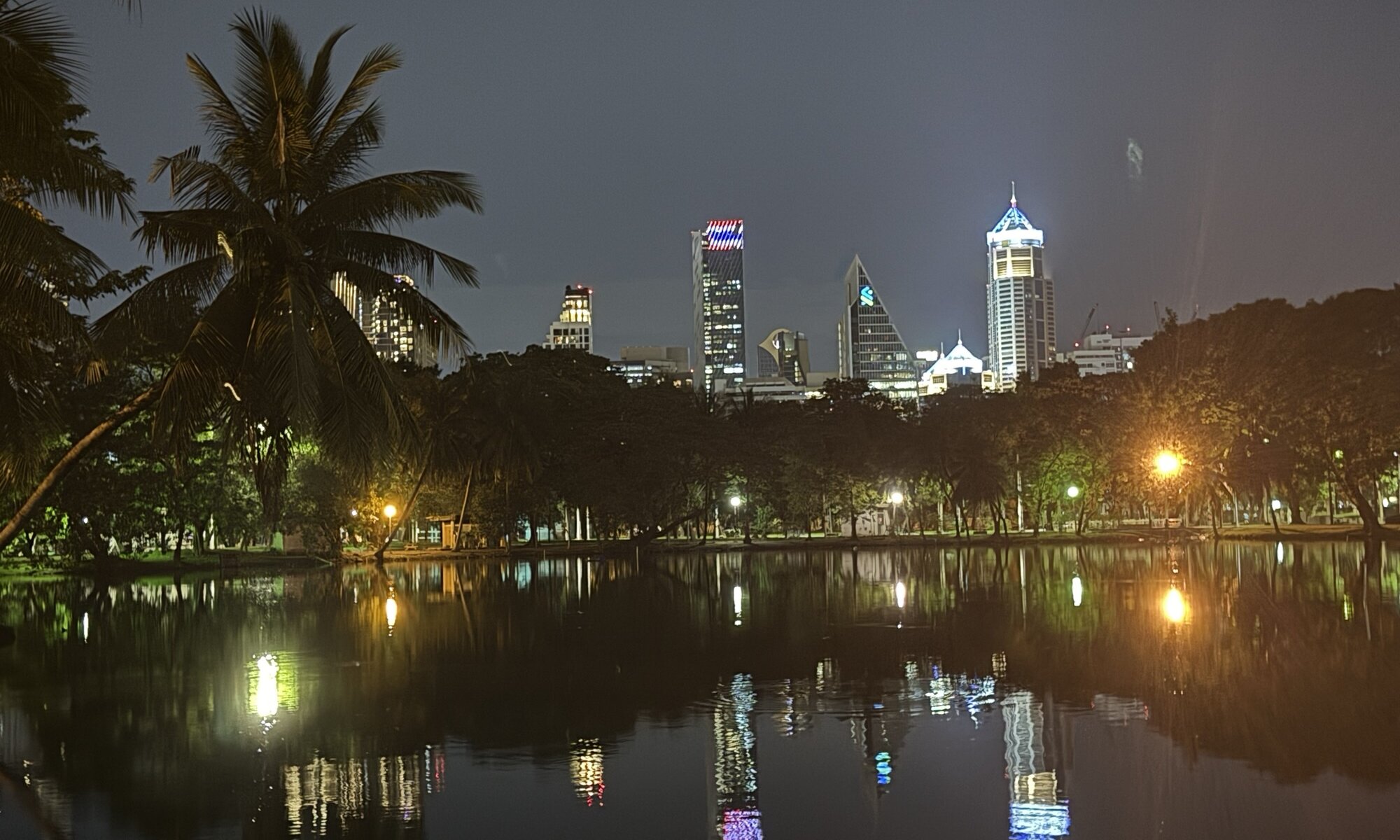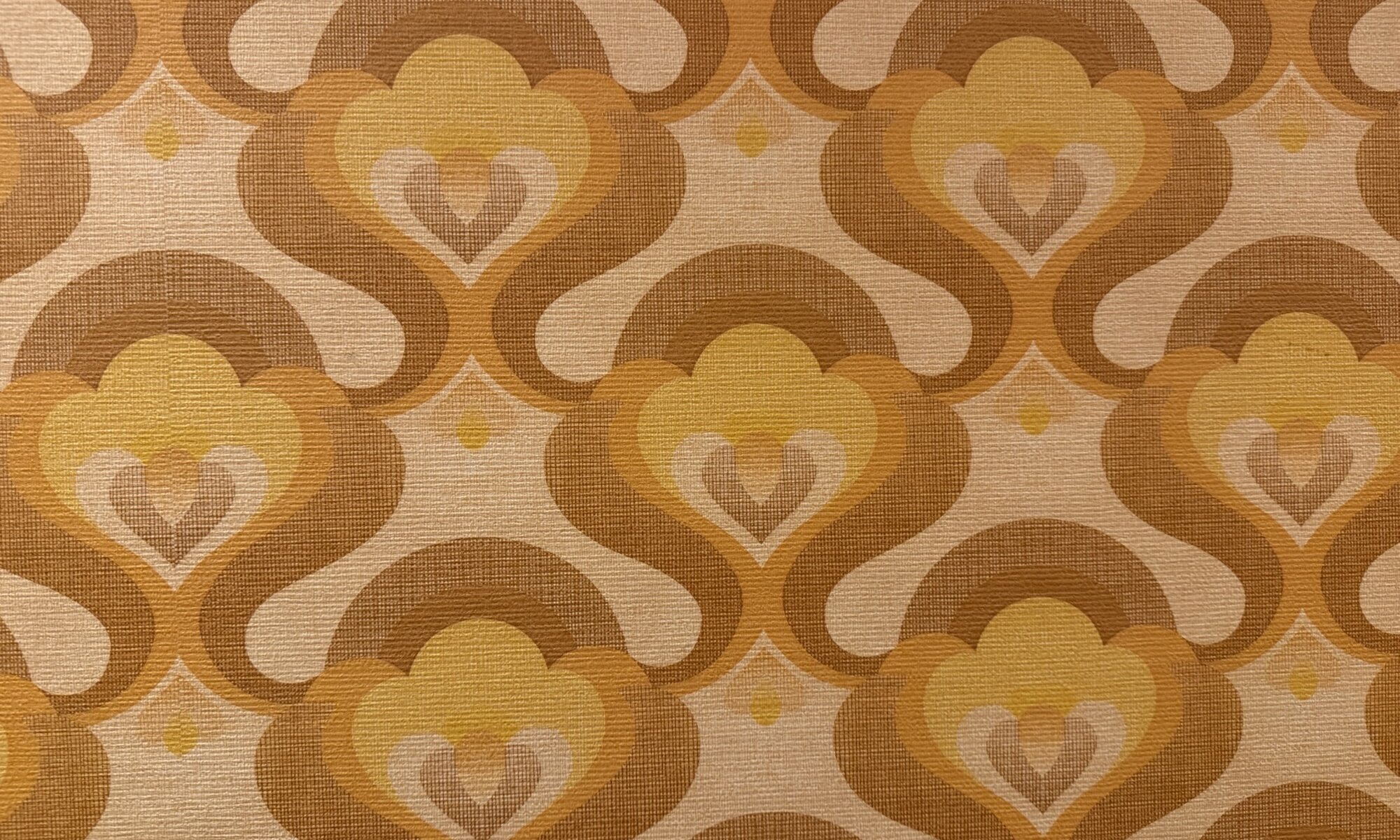The Siam Museum in กรุงเทพฯ presents an engaging and interactive journey into Thai culture, history, and identity. Housed in an elegant 19th-century neoclassical building that once served as the Ministry of Commerce, the museum beautifully blends architectural heritage with modern exhibit technology. Visitors can expect to explore an array of thoughtfully curated displays that focus on what it truly means to be Thai, covering traditions, beliefs, and the evolution of Thai society from ancient times to the present day. The atmosphere is refreshingly hands-on, encouraging active engagement rather than passive observation.
Continue reading “Only in Thailand”Golden Mount
Wat Saket, often known as the Temple of the Golden Mount, is one of กรุงเทพฯ’s oldest and most unique temples, with roots tracing back to the พระนครศรีอยุธยา period before the 18th century. Originally called Wat Sakae, it underwent restoration and was renamed Wat Saket Ratcha Wora Maha Wihan by King Rama I when กรุงเทพฯ was established as the new capital, highlighting its importance in Thai royal and religious life. The temple sits just outside the old city of กรุงเทพฯ on a man-made hill, offering a distinct atmosphere from other temples located within the old city walls.
Continue reading “Golden Mount”Thai history
The National Museum in กรุงเทพฯ stands as a monumental beacon of Thai culture and history. Established in 1874 by King Chulalongkorn (Rama V), it was originally created to display the royal collections of his father, King Mongkut (Rama IV). The museum’s home is the former Wang Na Palace, once the residence of the viceroy or ‘Front Palace‘ – a position remaining in Thai royal tradition until King Rama V’s reforms. The site itself is steeped in history, with many of its buildings dating back to the late 18th century, offering visitors a glimpse into both royal heritage and architectural grandeur.
Continue reading “Thai history”Wat Arun
Wat Arun, also known as the Temple of Dawn, is one of กรุงเทพฯ’s most striking and iconic landmarks, beautifully situated on the west bank of the Chao Phraya River. Its distinctive spires, or prangs, richly adorned with colourful porcelain and seashells, rise majestically against the cityscape, making it a favourite among both locals and travellers. The temple’s name celebrates the Hindu god Aruna, who is considered the personification of the rising sun, reflecting the temple’s role as a symbol of the dawn and new beginnings in Thai culture.
Continue reading “Wat Arun”Water people
The water people of กรุงเทพฯ, often known as the ‘klong dwellers‘, have a distinctive lifestyle shaped by generations living along the city’s sprawling network of canals and rivers. Historically, many communities settled on the banks and floating homes connected by wooden platforms, relying on boats for daily travel, commerce, and socialising. Their way of life reflects a balance between adaptation and tradition, maintaining age-old practices while coexisting with the city’s rapid urban growth. These waterborne neighbourhoods reveal a fascinating blend of culture, resilience, and intimacy with the waterways that once earned กรุงเทพฯ its nickname, the ‘Venice of the East‘.
Continue reading “Water people”Emerald Buddha
The Royal Palace of กรุงเทพฯ, officially known as the Grand Palace, stands as one of Thailand’s most iconic and historically rich landmarks. Constructed in 1782 during the reign of King Rama I, it served as the official residence of the Kings of Siam (and later Thailand) for over 150 years. The palace complex sits majestically on the banks of the Chao Phraya River, representing the splendour and cultural grandeur of the Thai monarchy. While it no longer houses the monarch permanently, the Grand Palace retains its deep ceremonial significance and remains a symbol of the nation’s heritage and sovereignty.
Continue reading “Emerald Buddha”Reclining Buddha
Wat Pho, also known as the Temple of the Reclining Buddha, is one of กรุงเทพฯ’s oldest and most revered temples, steeped in rich history and cultural significance. Founded in the 16th century during the พระนครศรีอยุธยา period, it was extensively restored and expanded in the late 18th century by King Rama I, who established it as a quintessential example of Thai religious architecture and a centre for education in traditional medicine and Thai massage. The temple complex is a sprawling site, offering visitors a glimpse into Thailand’s spiritual and artistic heritage, adorned with intricate murals, stupas, and thousands of Buddha images.
Continue reading “Reclining Buddha”Lumphini park
Lumphini Park in กรุงเทพฯ is a sprawling urban oasis and the city’s first public park, offering a verdant retreat in the midst of กรุงเทพฯ’s bustling central business district. The park’s history is deeply tied to King Rama VI, who in 1925 donated the land, originally his royal property, for the public good. The park was named after Lumbini, the birthplace of the Buddha in Nepal, symbolising prosperity and peace. Initially planned as a fairground to promote Thai industry, the vision transformed into a space devoted to recreation and community, a modernising gesture that has since endured almost a century.
Continue reading “Lumphini park”Suvarnabhumi
Suvarnabhumi International Airport, located to the east of กรุงเทพฯ, is one of the busiest and most important air hubs in Southeast Asia. Designed to handle vast numbers of passengers and flights each day, it is a strikingly modern gateway into Thailand, with its wide concourses, soaring glass façades, and impressive steel structures reflecting the country’s ambition to position itself as a regional transport leader. From the moment one arrives, the sheer sense of scale, efficiency, and constant movement is immediately evident, giving travellers a glimpse of how central this airport is to global connectivity.
Continue reading “Suvarnabhumi”East Germany
The DDR-Museum in Berlin offers a vividly immersive journey into life behind the Iron Curtain, capturing the everyday experiences of citizens in the former East Germany. Unlike many traditional museums, it favours interactivity, encouraging visitors to open cupboards, sit in reconstructed living rooms, or even take the wheel of a Trabant car in a simulated drive. Its design brings history to life not only as political or military events but also through the objects, fashions, and domestic routines that defined existence in the German Democratic Republic. The museum’s central character lies in its hands-on approach, inviting curiosity and participation rather than passive observation.
Continue reading “East Germany”